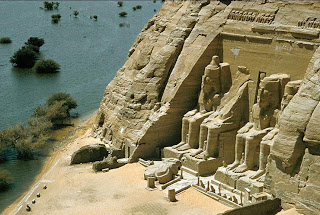Bush says Libby’s punishment remains “harsh” because his reputation is “forever damaged.” Meanwhile, Bush employs, as a deputy national security adviser, none other  than Elliott Abrams, who pleaded guilty to unlawfully withholding information from Congress in the Iran-contra affair. Abrams was one of six Iran-contra defendants pardoned by Bush’s father, who was himself a subject of the special prosecutor’s investigation of the scandal.
than Elliott Abrams, who pleaded guilty to unlawfully withholding information from Congress in the Iran-contra affair. Abrams was one of six Iran-contra defendants pardoned by Bush’s father, who was himself a subject of the special prosecutor’s investigation of the scandal.
In other words, obstruction of justice when it gets too close to home is a family tradition. And being a loyal Bushie means never having to say you’re sorry...
 than Elliott Abrams, who pleaded guilty to unlawfully withholding information from Congress in the Iran-contra affair. Abrams was one of six Iran-contra defendants pardoned by Bush’s father, who was himself a subject of the special prosecutor’s investigation of the scandal.
than Elliott Abrams, who pleaded guilty to unlawfully withholding information from Congress in the Iran-contra affair. Abrams was one of six Iran-contra defendants pardoned by Bush’s father, who was himself a subject of the special prosecutor’s investigation of the scandal.In other words, obstruction of justice when it gets too close to home is a family tradition. And being a loyal Bushie means never having to say you’re sorry...
For Complete IIPM Article, Click here
Source: IIPM Editorial, 2006
An IIPM and Management Guru Prof. Arindam Chaudhuri's Initiative
Source: IIPM Editorial, 2006
An IIPM and Management Guru Prof. Arindam Chaudhuri's Initiative
IIPM, Business College Ranking India BBA Institute India, IIPM IIPM - Nikhil Khade Online Welcome to 4Ps Business and Marketing The IIPM Think Tank IIPM New Delhi India Professor Arindam Chaudhuri, Renowned Management Guru & Economist IIPM Info Planning and Entrepreneurship Programme, IIPM New Delhi, India Business And Economy IIPM Placements New Delhi, India IIPM Business Management Institute India


